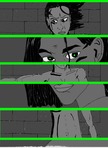M.R. Gott's Blog, page 24
July 5, 2012
Urban Gothic by Brian Keene
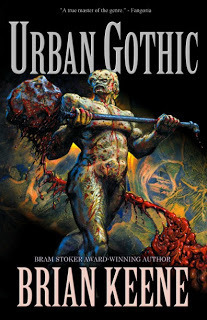
Overview;
On their way home from a concert six surbanites find themselves lost in Philadelphia with a broken down car. When they are approached by a group of young black males they flee for safety into an old abandoned house.
“Kerri had the impression that if she reached her hand out, the darkness would bbe a tangible thing, capable of sticking to her fingers like tar.”
Review;
Brian Keene’s Urban Gothic is a brutal nearly nonstop grueling horror experience. Before the first chapter is complete the six kids are in the house, and shit hits the fan. There is absolutely no safety once in the house. The teens are in constant danger with the smallest of respites between the attacks from the deformed humanoids within.
The atmosphere of the story is the real star in this novel. Every aspect of the house from the sounds smells and feels (the kids frequently find themselves in total darkness) are thoroughly and fully realized. The creatures dwelling within are some of the most heinous creations in horror fiction bare none.
One aspect of the story I appreciated the most was the will to survive of the entire cast. There were no throwaway kills from the cast and it created a much bleaker atmosphere when the kids do everything right (except going into the house) and still end up dying horrible deaths.
The kids were also a clear weak point as they were not as well developed as the casts of most of Keene’s other works. This is clearly an effect of starting the horror with such speed and fervor, but I can see it irritating some readers. That is not to say the cast are 2D stock characters. Their backgrounds are slowly filled in, however compared to other Keene novels they were the least defined characters he has created to my knowledge.
The story bounces between the kids trapped within the building and the teens outside who are the indirect cause of their flight, trying to save them. This was one of the most interesting aspects of the novel and was an interesting technique to break up the near constant action from within the house. In the end;
Brian Keene’s Urban Gothic is one of the most relentless tense grueling horror novels I have ever read. With an atmosphere I could reach out and touch combined with a tough group of survivors this novel will not disappoint those looking for a brutal action packed survival tale.
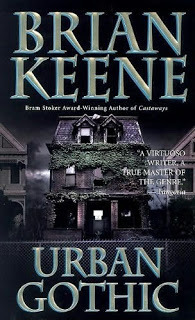
Published on July 05, 2012 04:49
July 2, 2012
Ravenous Monster Reviews Where the Dead Fear to Tread
"It could be a future movie or video game franchise hit that you can brag about having picked up when it was just a humble indie e-book. Give it a chance and you may be surprised to find out Where the Dead Fear to Tread."
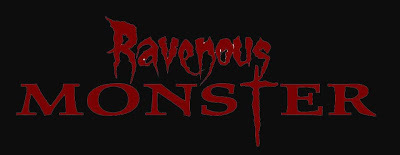
Click above for Robert Hibbs full review.


Click above for Robert Hibbs full review.
Published on July 02, 2012 17:01
June 30, 2012
Shivers aka They Came from Within
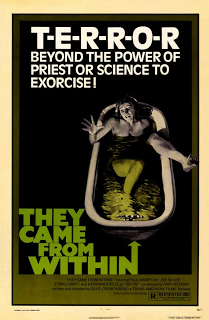
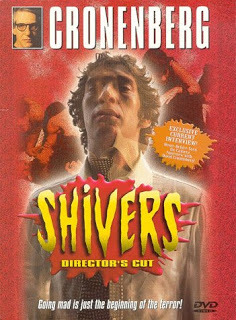
Shivers or They Came from Within is David Cronenberg's controversial first film. Combining elements of zombies, nymphomania as well as weird slugs they film holds up incredibly well. If you can buy the premise that the major players share a single massive apartment there is much to enjoy here. The practical effects are great in there subtlety and the eerie atmosphere is top notch. This flick is pretty difficult to find for a reasonable price and impossible to rent, but you can stream it here.
Funding for the film was acquired using a Canadian tax dollars and people were outraged when they saw the final product. Despite this outrage it's the only flick funded with this program that turned a profit.
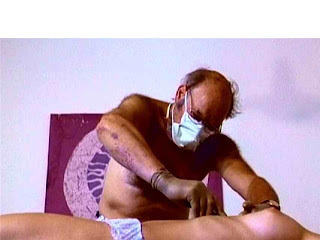
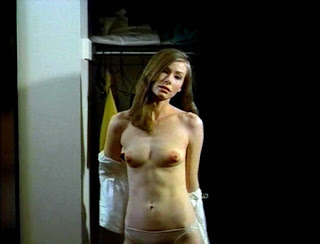
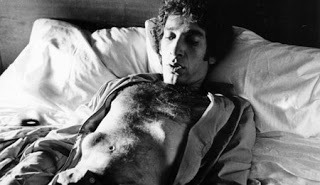
Published on June 30, 2012 19:09
June 29, 2012
Anno Dracula - The Bloody Red Baron by Kim Newman
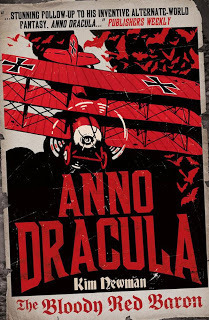
"Kim Newman's Anno Dracula is back in print, and we must celebrate. It was the first mash-up of literature, history and vampires, and now, in a world in which vampires are everywhere, it's still the best, and its bite is just as sharp. Compulsory reading, commentary, and mindgame: glorious." - Neil Gaiman
"Politics, horror, and romance are woven together in this brilliantly imagined and realized novel. Newman's prose is a delight, his attention to detail is spellbinding." - Time Out
“Stephen King assumes we hate vampires; Anne Rice makes it safe to love them, because they hate themselves. Kim Newman suspects that most of us live with them… Anno Dracula is the definitive account of that post-modern species, the self-obsessed undead.” - New York Times
It is 1918 and Graf von Dracula is commander-in-chief of the armies of Germany and Austria-Hungary. The war of the great powers in Europe is also a war between the living and the dead. Caught up in the conflict, Charles Beauregard, an old enemy of Dracula, his protégé Edwin Winthrop, and intrepid vampire reporter Kate Reed go head-to-head with the lethal vampire flying machine that is the Bloody Red Baron...
In the brand-new novella Vampire Romance, Genevieve Dieudonne, newly returned to England, infiltrates a singular vampire gathering in the service of the Diogenes Club.
Click below for a review by Sean Lee Levin of She Never Slept
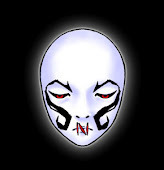
Published on June 29, 2012 16:37
June 20, 2012
The Frenzy War Gregory Lamberson
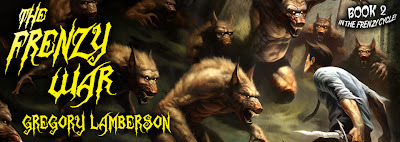
Overview; Two years have passed since the events of The Frenzy Way. Captain Tony Mace has been publicly disgraced, unable to provide a final account for the Manhattan werewolf. A department scapegoat he is about to be recalled into action when a terrorist group enters Manhattan with the goal of eradicating the entire werewolf species, turning the city into a bloody war zone.
“Jason looked up, fear evident in his eyes even as his face contorted.”
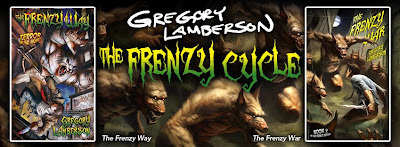
Review;Gregory Lamberson’s Frenzy War builds naturally on the ideas first presented in The Frenzy Way. The few surviving characters are brought back with new additions. Tony Mace has a full squad backing him up this time, and terrorist group The Brotherhood of Torquemada’s members are fully developed as well. Mace is the anchor the story revolves around and allows the reader a great window into this world. From the new cast a standout is Rhonda a werewolf caught up in the war. Until I picked up this series I always thought of werewolf fiction as the hardest classic monster to write. Mr. Lamberson has me rethinking this.Lamberson has an incredibly eye for detail. His supernatural work contains elements of police procedural, which adds plausibility to the fantastical elements. His character creation is also superb. I read horror to provoke a reaction, and Lamberson delivers. A found myself rooting for some of the characters strongly hoping they would survive. A key to this is Lamberson’s willingness to spend time with the psychological effects of this violence on those around it, not just the graphic gore, though that is included as well. The plot has a few great logical reveals and as a reader I never felt cheated. The action sequences are well conceived and play out cinematically. His ability to clearly keep track of multiple characters in massive sequences is astounding. The Frenzy War is a more ambitious novel than The Frenzy Way, and while I generally like smaller scale stories more I found myself enraptured in Lamberson’s story.
In the End;The Frenzy War further solidifies Gregory Lamberson as one the defining writers in contemporary horror. He knows how to give horror fans the conventions they love, without falling into cliché. I devoured this book and if you have any interest in the synopsis I am confident you will as well.
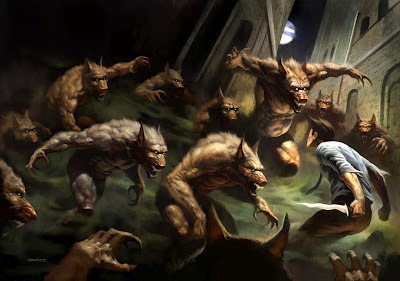
Published on June 20, 2012 17:17
In the Grindhouse Traditoin...Shadow: Dead Riot
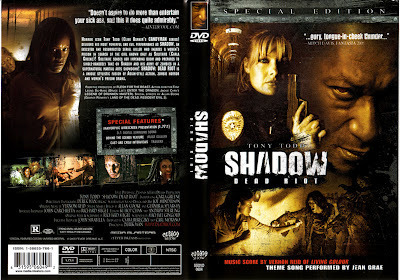
Derek Wan's Shadow: Dead Riot is an affectionate homage to; prisonploitation, sexploitation, Kung Fu and zombie movies. If you have no interest in any of these sub-genres you will find nothing to like here.
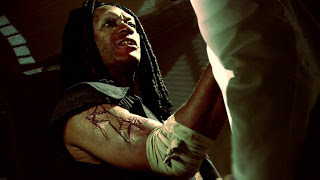
However if this sounds appealing to you on any level you will find much to like here. The plot revolves around Tony Todd's Shadow being executed for murdering a pregnant woman. Twenty years later Solitaire played with incredible gusto by Carla Greene is sent to the same prison which no operates as an experimental woman's prison.
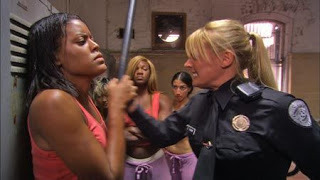
The effects are well done, and the kung fu sequences are amazing especially for the budget. The makers of Shadow: Dead Riot went out and got some of Jackie Chan's crew and it shows. Carla Greene performs admirably in these sequences and is a true standout in the film.
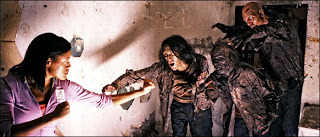
Shadow: Dead Riot has strong production values for its low budget, and never looks so bad it takes you out of the film.While there are some obvious lapses in logic and a couple plot holes and actions of convenience if you want to see a woman's prison kung fu zombie movies that molds these elements into a clear fast paced coherent film, I challenge you to find another flick meeting all this criteria. This is a bloody entertaining movie.
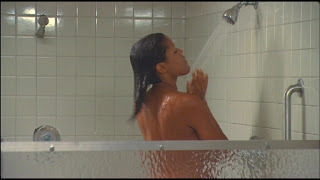 This film is available in a DVD two pack with Flesh for the Beast and is filtered to look like a distorted out 70's reel. Or you can rent it from youtube below.
This film is available in a DVD two pack with Flesh for the Beast and is filtered to look like a distorted out 70's reel. Or you can rent it from youtube below.
Published on June 20, 2012 07:51
June 19, 2012
In the Grindhouse Tradition...Brain Dead
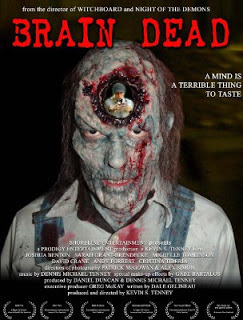
Kevin Tenney's Brain Dead is a film with a very specific audience in mind, and he does not want to disappoint, and he doesn't. With filmography including Witchboard, and Night of the Demons Tenney knows genre fare.

Brain Dead moves at an incredibly fast pace, wasting no time establishing its characters and set up. The cast is strong with Joshua Benton's performance great as the semi capable wise ass forced to lead the rag tag group against an alien zombie onslaught. Michelle Tomlinson also provides a strong role. The interplay between the assembled group including an adulterous minister an escaped convict and two grad students works well. This comes from having a group of strong personalities stuck together. No one is a simple follower or immediate zombie fodder.
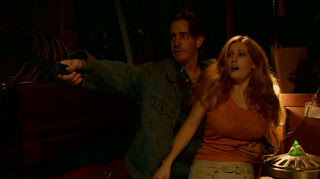
Tenney's action set pieces are strong with a followable sense of movement and incredibly strong practical effects department, especially for low budget fare. The few horrible CG shots are really the only weakness.
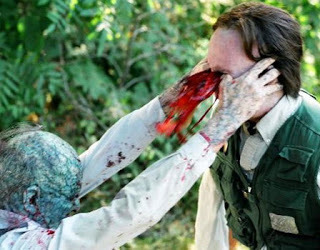
This is not a film that will convert someone to a genre fan, but there is much to appreciate in this little gem. It held my attention and was not soon forgot. Click any of the images to watch the film online for free. Those of you with netflix can also stream it.
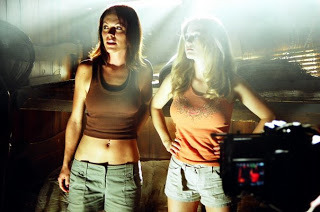
Published on June 19, 2012 12:48
June 17, 2012
M.R. interviews.....Dylan Morgan
Please welcome Dylan Morgan.
In Blood War you create an epic confrontation between vampires, werewolves and a hybrid species. Was it more daunting to create a new creature or add your own spin to the classic archetypes?
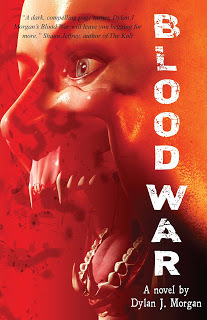
It was definitely more daunting to add my own spin to classic archetypes. Vampires and werewolves have been around, in folklore and legend, fiction and film, for such a long time, and the stories have all been told and retold countless times, so finding something fresh to excite me the writer in the hope of exciting the reader was certainly a challenge. There are a number of plots running through the novel, stemming from all three species, so this was a good way to keep the writing fresh and detailed—there was always something happening to advance the story.In addition, I wanted this book to have an international feel to it, so there are a lot of different locations and settings throughout the novel. Most of the book is set in Europe, in cities that I’ve visited and others I would like to visit, so this was a productive way for me to keep the writing exciting and the characters fresh and enthralling.My werewolves do not look like wolves—they’re bipedal, monstrous creatures. My vampires do not sparkle—they’re nimble, devious beings. A combination of both of these species was a joy to write, and not daunting at all. Of course, the hybrids were blessed with a combination of both werewolf and vampire strengths, but they inherit their weaknesses too.
How did the character Steele from October Rain come into existence?
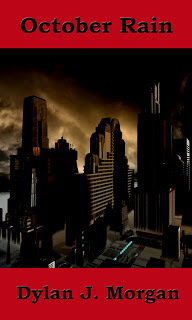
The entire story for October Rain came from a dream, which is the only time a dream of mine has so far influenced something I’ve written. The dream involved one of Saturn’s moons colliding with the planet. My daughter was on Saturn and I was trying to rescue her. Dreams truly are bizarre sometimes, but it formed the idea for a story set in space with an unbreakable connection between the protagonist and his daughter. This is where the basis for Steele came from, me trying to rescue my daughter, and these family ties play out in the novella. The story was moved from Saturn to Mars for convenience purposes and, to breathe more life into the character, Steele became a determined, ruthless bounty hunter—but with a soft side close to the surface, which comes tragically to the fore as the story progresses.
October Rain and Blood War involve incredibly realized and created worlds. What techniques do you use to when crafting these worlds?
A lot of good fiction has its basis planted firmly in fact, and this is what I tried to establish in these two books, particularly with Blood War. It’s vital that the factual information of a story is correct or else it just won’t seem believable to the reader, particularly if that person has been to that place.Of course, October Rain is based on Mars and while nobody has been there I’m sure everyone knows what the planet looks like. Researching the planet, the way it fits with the other celestial beings in the solar system was an important thing for me to do, in order for myself to feel connected with the story. For the non-factual information in the novella, like the city of Olympia for example, I designed a blueprint of the city layout so that it became easy for me to put myself on its streets to watch the action unfold.Fact was even more vitally important in Blood War, as the locations used are familiar to a lot of people. The story unfolds in major European cities like London and Rome, in countries like France, Ukraine and Poland, so the factual information about the streets and landmarks had to be correct. I have been fortunate to have traveled to many of the places in the book so firsthand experience helped me greatly. With the factual information giving me a genuine feel for the story, it was then easy for the story itself to develop and unfold in my mind almost like a movie playing before me, which is an equally important tool for the writer. If I believe I am in the story, experiencing it, then the likelihood is that the reader with feel the same way.
Your novel Hosts revolves around an archaeological dig. Where did this idea stem from?
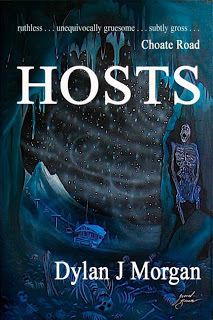
It stemmed from having a need for a plot device that worked. The original idea for Hosts had the infection coming initially from food consumed by patrons in Faulkner Lodge (the name of the hotel in the book), but then that led me back to the question of ‘How did the food become contaminated in the first place?’ A few days or weeks of mulling over the idea brought me to the conclusion that I could use an archeological dig that unearths the remains of a mummified body which has kept the infection frozen in a cryogenic state for hundreds of years. The mummy thaws and the infection is unleashed upon the town of Snow Peak, a much more plausible and exciting plot device than contaminated food.
In Hosts you use the classic set-up of an isolated group and a threat that is kept to the shadows. What do you like most about this set up?
The futility of the situation is the best part of the set-up. The two main characters, Sheriff Richard Wade and Doctor Lauren Kemper are brought together to fight for their lives and the lives of those in the town against an overwhelming and seemingly unstoppable entity. They’re isolated by a severe snowstorm . . . throw in the character Malcolm MacDonald—who is possibly the most hated villain character I’ve created—and the scenario for true horror arises. As mentioned, it is a classic set-up, and one done numerous times in the past in horror books and movies, but it’s one that always works.
Aside from your novels you have a handful of short stories published. How is your process for crafting short fiction different from full length novels?
The writing process is not much different for me, it’s still the same: I get an idea which develops and grows characters and a plot before reaching a conclusion. The main difference is not worrying too much about sub-plots for a short story, whereas sub-plots are quite important to drive a novel forward. The main plot almost always isn’t enough to keep a reader interested. The cast of characters is usually much smaller for a short story, too, so there are fewer egos to keep under control.I used to be reasonably prolific at writing short stories, most of my short fiction was written at the beginning of my journey of learning this craft. I don’t write much short fiction these days, but I do tend to treat every chapter of my novels as a short story—they need to start with conflict, something to grab the reader and pull them further into the book; they need to have a defined purpose; and if possible they need to end in such a way as to leave the reader wanting more.Getting the reader to turn the page from chapter X to chapter Y and through to chapter Z is often the hardest task a writer has.
Your work seems to revolve around incredibly dark material. What was the first book you remember being genuinely scared of? Was your immediate reaction to run out and find more, or lock the offending text in your closet and never breathe a word of it to anyone?
Running out and finding more was my reaction. I’d never consider locking fiction away, any kind of fiction from whatever genre deserves its place and deserves to be read. My earliest memories of wanting to be a writer are from my very early teenage years, but the first book that made an impact on me came in my early twenties: a collection of three novels by Stephen King. The book contained The Shining, Misery, and Salem’s Lot, and while those stories didn’t scare me they made a huge impact on me as a writer and set my mind straight about what excited me as a reader and where I should be heading as a writer. (I read Misery in 6thgrade and remember thinking nothing could be more intense. I am also a huge fan of The Shining, both the novel and Kubrick’s) I’ll read anything, but nothing stirs the writer in me more than horror.In saying that, I don’t think I have ever been genuinely scared from anything I’ve read. I’ve been grossed out a few times, have had a story leave an impact on me, but fear has never really manifested itself in me while reading. But you’re right; my work does lean heavily on the dark side, the pained side of life. Hollywood endings are few and far between in my stories.
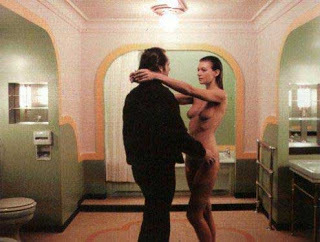
What active genre authors are you currently following?
Dean Koontz has always been a favorite author of mine. I love the unique way he draws me into the world he creates, every time, in every story. I still read his novels now with as much desire as I did his earlier works. From the “small press” world, Kealan Patrick Burke is a writer who impresses me greatly. He has such descriptive prose it’s very easy to get lost in the colorful, and often violent, worlds he creates.
Do you have anything new coming down the pipeline you would like to share with us?
At the moment there is nothing “new”-new to speak of, unfortunately, but I do have two full-length manuscripts sitting in slush piles waiting for a chance at life. I am currently almost 40,000 words into a new novel which is a futuristic piece with heavy splashes of Sci-Fi and Horror, and there are three other ideas that are spawning and growing in my warped mind, ready to develop into full-fledged stories.There are some new re-releases to watch out for, though, with my debut novel Hosts finally being available on the Kindle platform. My novella, October Rain, is set to be re-released in Kindle format by Hazardous Press (www.hazardouspress.com) with new cover art and a few minor edits.Hopefully, there’ll be plenty to read from me in the not-too-distant future.We look forward to it.
Published on June 17, 2012 07:00
June 14, 2012
Resident Evil Retribution Trailer
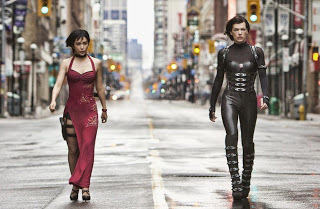
The full trailer for Resident Evil Retribution is out today. I am a bit leery of the the plot device being employed though...
Published on June 14, 2012 16:47
June 9, 2012
Prometheus & Prometheus The Art of the Film
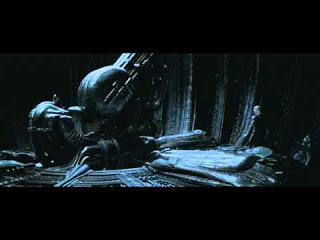
It’s 1979 and John Hurt’s Kane is falling onto the dinner table, the shock of the accompanying image is one that is nearly impossible to duplicate. It is also the reason that Prometheus changed during the writing process from a direct Alien prequel to a film exploring questions about the ship Dallas and his crew found on LV-426. The setting of Prometheus is LV-223.
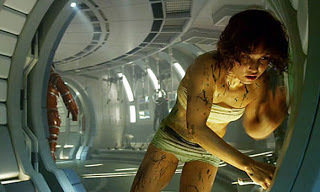
“He’s no longer frightening.” Scott says of the classic Xenomorph. With this is mind the script changed directions and the recently released Prometheus was born. Prometheus is at the very least a very good film. Whether it is a worthy Alien film? This can only be realized from repeat viewings over the years. The movie has a great deal going for it. The cast is top notch and delivers. By ignoring the iconic xenomorph Scott is free to tease the audience and rediscover the sense of unknown in the franchise's early films. The film is encompassed in an air of mystery as the audience discovers the secrets of LV-223 with the crew of Prometheus.
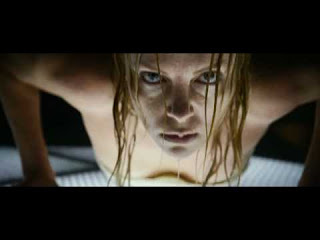
In a nod to the Sci Fi films of old the movie even dares to investigate and ask deep philosophical questions. With nods to Alien and a string of original ideas and set pieces Prometheus at the very least deserves a viewing on the big screen, especially for those of us not alive in 1979.
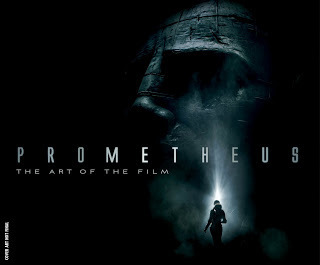
Prometheus The Art of the Film is an incredible companion piece to Ridley Scott’s return to science fiction. The essay by Scott on the film's evolution is incredibly incitefull and refreshing to find a director who is willing to grow with their ideas. In a day and age of CGI everything, the production stills of the sets construction was refreshing. I truly believe it is best when an actor/actress can see what they are supposed to be reacting to.The early concept paintings are near photograph quality and contain the original end sequence which I really thing would have been very cool. The detail of the sets when you stop and examine them adds a sense of awe not only to the designers but the people who so fully realized this new world.
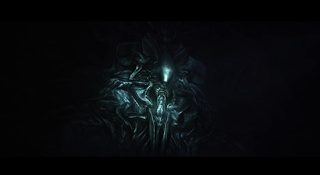
For anyone wishing to re-examine Prometheus I would strongly recommend the gorgeous Prometheus The Art of the Film. And to further prove what a tease Scott can be I leave you with his final quote, “I thought Prometheus was so enjoyable-returning to the world of science fiction was so fun- I’m thinking about what the hell I might do for a Prometheus 2.”
Published on June 09, 2012 16:04

